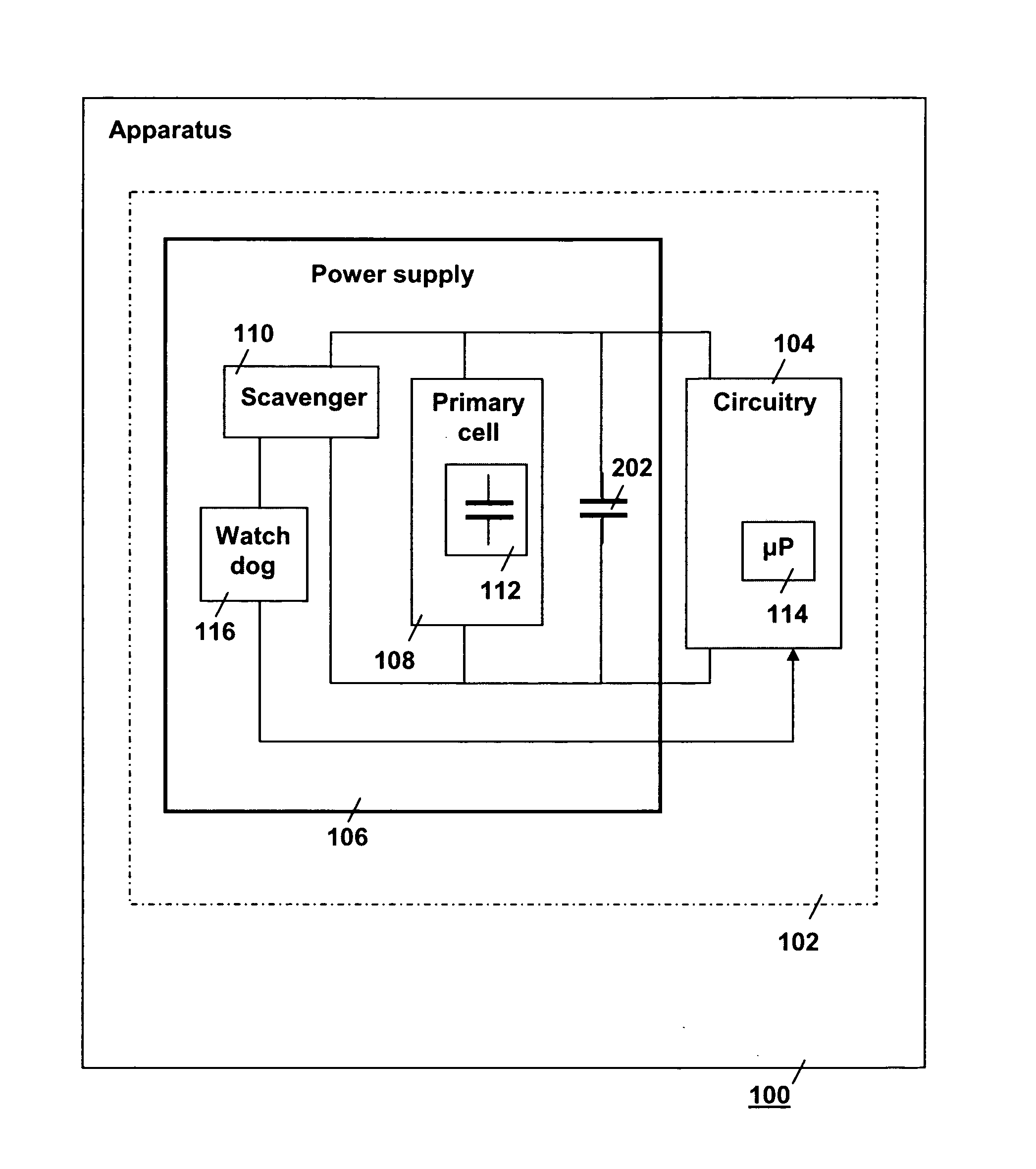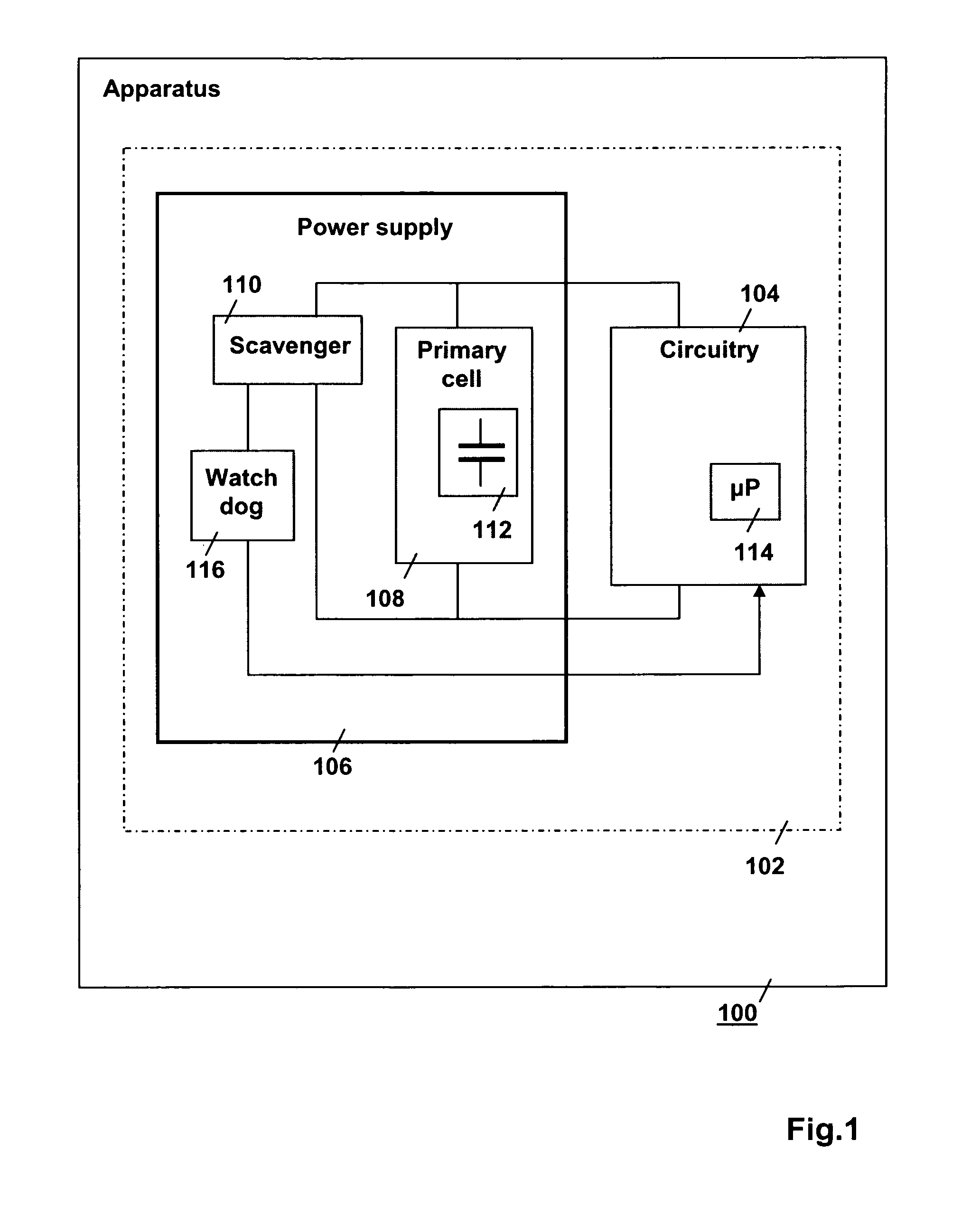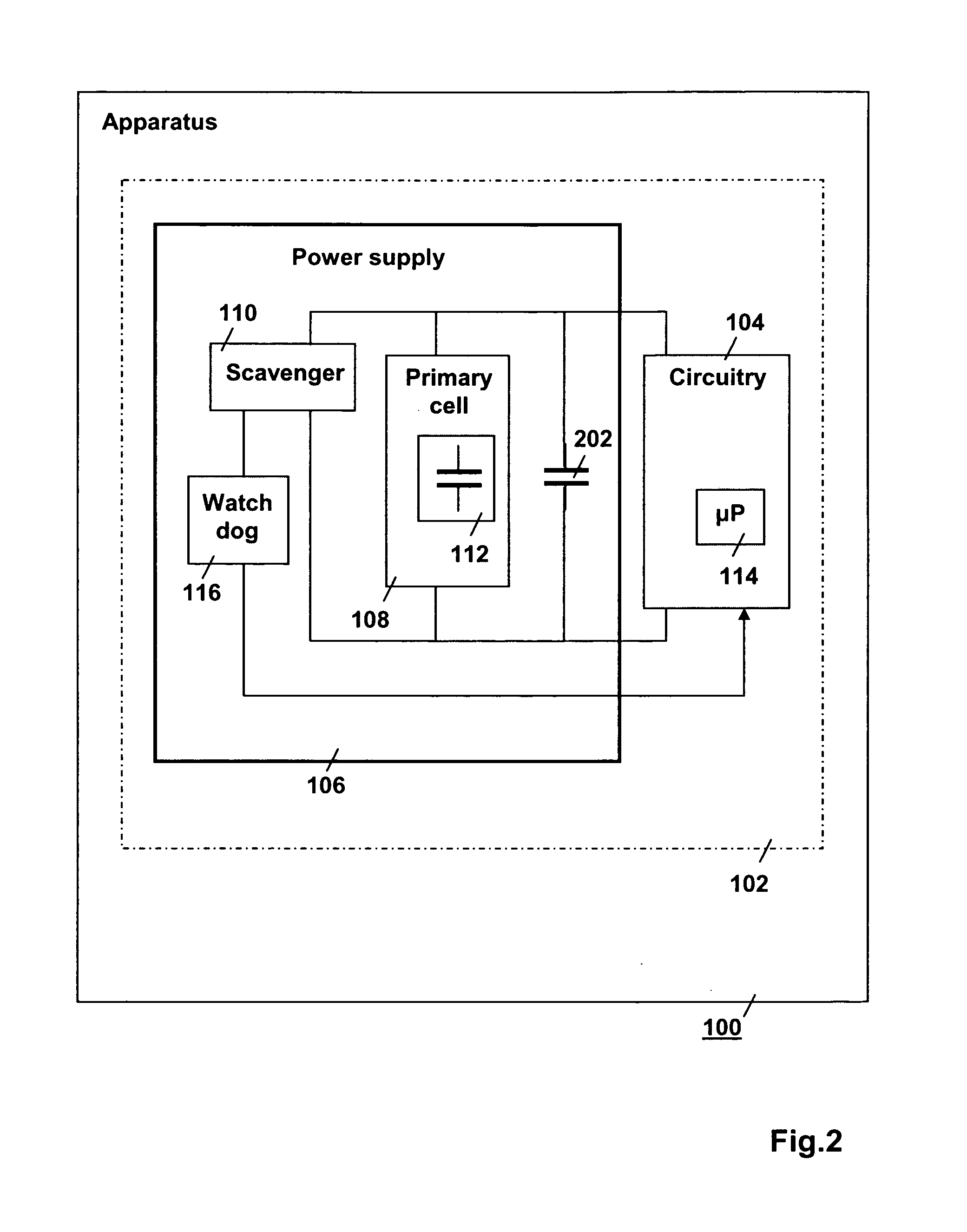Wireless sensor with energy scavenger
- Summary
- Abstract
- Description
- Claims
- Application Information
AI Technical Summary
Benefits of technology
Problems solved by technology
Method used
Image
Examples
Embodiment Construction
[0018]FIG. 1 is a block diagram of a first embodiment of an apparatus 100 in the invention. The apparatus 100 comprises an autonomous system 102. The autonomous system 102 includes electronic circuitry 104 and a power supply 106 for powering the electronic circuitry 104. The electronic circuitry 104 of the autonomous system 102 includes, e.g., a wireless sensor (not shown) for sensing a magnitude of a physical quantity for the purpose of condition monitoring during operational use of the apparatus 100. Data representative of the sensed physical quantity is buffered locally in a memory (not shown) at the electronic circuitry 104, and transmitted using a wireless transmitter (not shown). Alternatively, the electronic circuitry 104 in the autonomous system 102 comprises an actuator (not shown) for controlling operation of a mechanical component (not shown), such as a valve in a pipeline (not shown), or a sun visor (not shown) of the apparatus 100, in dependence on a magnitude of the ph...
PUM
 Login to View More
Login to View More Abstract
Description
Claims
Application Information
 Login to View More
Login to View More - R&D
- Intellectual Property
- Life Sciences
- Materials
- Tech Scout
- Unparalleled Data Quality
- Higher Quality Content
- 60% Fewer Hallucinations
Browse by: Latest US Patents, China's latest patents, Technical Efficacy Thesaurus, Application Domain, Technology Topic, Popular Technical Reports.
© 2025 PatSnap. All rights reserved.Legal|Privacy policy|Modern Slavery Act Transparency Statement|Sitemap|About US| Contact US: help@patsnap.com



